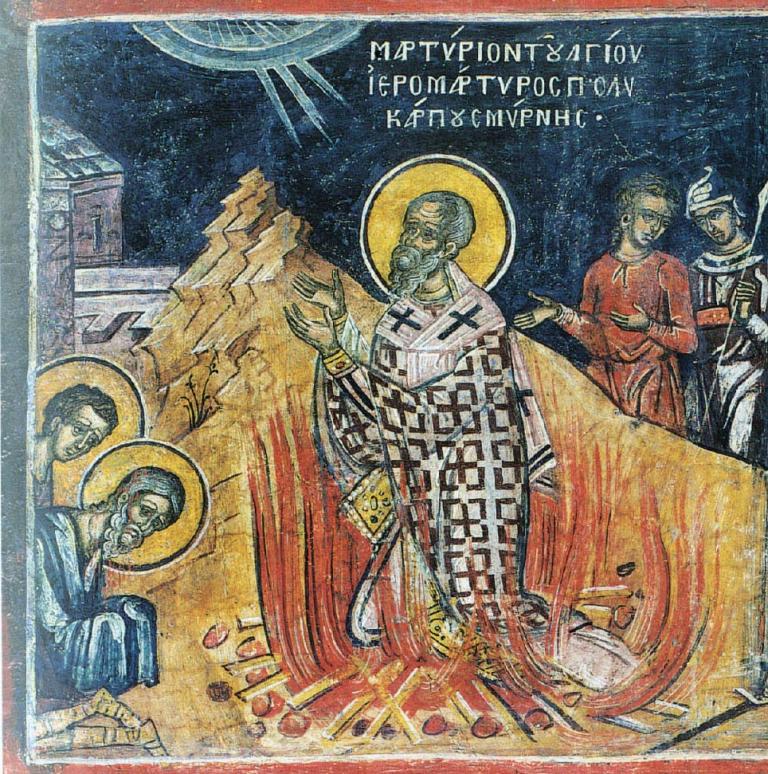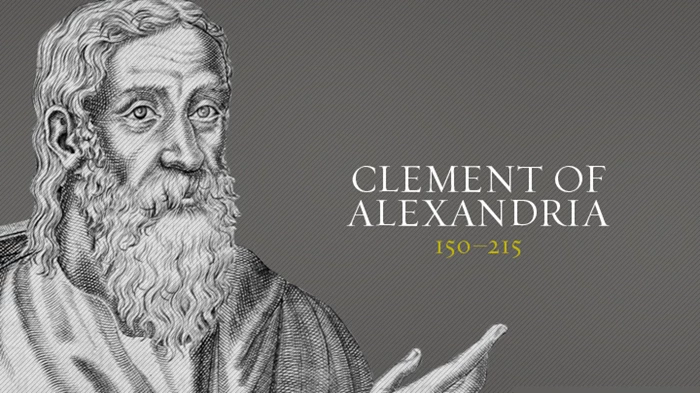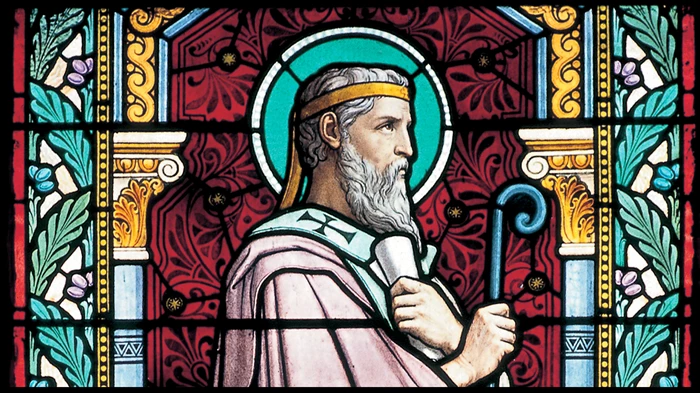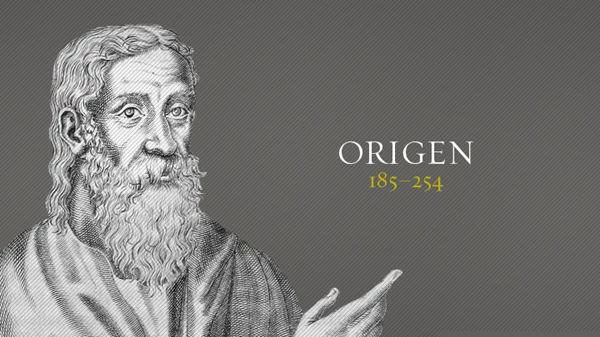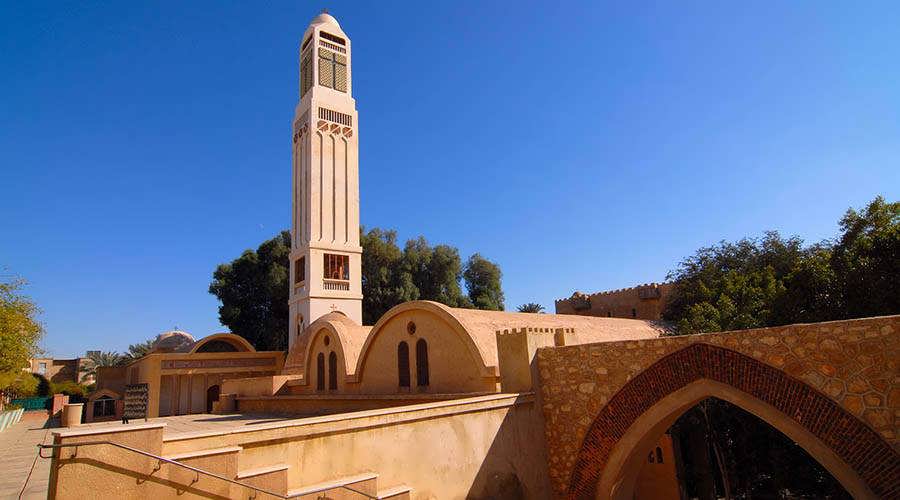Introduction: Contextual Background
The Martyrdom of Polycarp is considered the oldest written account of a Christian martyrdom outside the New Testament[1]. Polycarp, bishop of Smyrna, was one of the most important Christian leaders in Asia Minor in the first half of the second century. Irenaeus of Lyons, who is considered Polycarp’s disciple (Mart. Moscow MS, 2), mentioned that Polycarp knew John the disciple of the Lord[2], and was appointed bishop of Smyrna by the apostles themselves[3]. Polycarp’s life and ministry (ca. 70 – 160 AD) spanned a transitional time between the early apostolic era and the consolidation of Catholic Christianity[4].
During this era, “Imperial Cult” was very widespread in the Roman Empire. The region of Asia Minor was one of the most influenced places by the imperial cult. Nearly all activities in this region were affected by this imperial religion. Many imperial cult temples and altars were built in prominent locations in the major cities of Asia Minor[5]. Cities competed with each other for building such temples[6]. Imperial cult festivals were considered major events where everyone shows his religious and political loyalty to the Roman Empire. It appears as if a level of participation in the imperial cult was required to participate in economic activities[7]. The coins used at this time reflected a degree of loyalty to Caesar by embracing his photo on each of its sides. In this context, Christians found themselves facing a socio-political situation where political loyalty, including imperial cult, became a test of their loyalty to Jesus Christ[8]. Consequently, because of Christians’ belief in Jesus Christ as the only Lord, the church found itself facing the Roman Empire where Caesar is the lord (Mart. 8:2). The Martyrdom of Polycarp is a testimony to this growing challenge that confronted the church during this era[9].
The Martyrdom of Polycarp: The Basic Structure and Purpose
The Martyrdom of Polycarp was constructed in the form of a letter. It was sent to the church of Philomelium from the church of the Smyrnaeans (Mart. Salutation). Although it was designed to be sent specifically to a certain church, some scholars, based on the letter’s early popularity, argue that it was intended for circulation among all churches of the region[10]. As a letter, The Martyrdom reflects some characteristics of the basic structure of this kind of literature. The main text can be divided into these sections: an initial greeting, the reason for sending the letter (Mart.1), the main message (Mart. 2-18), a summary of the message (Mart. 19), and concluding greetings (Mart. 20). The text also contains a section of later additions that include The Date of the Martyrdom (Mart. 21), A Second Farewell (Mart. 22), A Note from Socrates, A Note from Pionius, and The Ending According to the Moscow Manuscript. Regarding the main message, it can be divided into two sections: examples of noble martyrdom and coward retreat (Mart. 2-4) and narrative of the martyrdom of Polycarp (Mart. 5-18). The length of the narrative part in The Martyrdom (5-18) encouraged some scholars to see the text not only as a letter but also as an early template for another form of literature called “martyr acts”.
This form of literature was known in the ancient Christian tradition and became widespread among the ancient Christian communities, especially among those who suffered persecution[11]. Generally, the main purpose of “martyr acts” was to encourage Christians who face persecution and martyrdom, and this clearly demonstrated in the text of The Martyrdom of Polycarp.
There is no doubt that the main purpose of The Martyrdom is to present a model of martyrdom that is “in accord with the gospel” (Mart. 1:1, 19:1). The text clearly intends to honor the memory of a respected bishop and Martyr (Mart. 5:1), encourage Christians in Philomelium (Mart. 1), and differentiate between the right model of martyrdom and the wrong one (Mart. 2:1, 4:1). In addition to this primary purpose, the text presents another aspect that might be hidden among its lines and words; it is the “Christian identity”. The analytical reading of the text shows that the issue of the “Christian identity” is also a central theme in The Martyrdom. The text emphasizes a new identity of Christians, defines them as a “new race” (Mart. 3:2), and highlights some characteristics of this new race. This idea is very important in understanding the text to the extent that it would not be an exaggeration to say that the primary purpose of the text, which is to present a model of martyrdom and encourage those who face persecution, directly depends on the idea of the new identity for Christians as will be shown below.
Christian Identity: The Emergence of a “New Race”
The Martyrdom of Polycarp begins by stating: “The church of God that sojourns at Smyrna, to the church of God that sojourns in Philomelium and to all the communities of the holy and catholic church sojourning in every place” (Mart. Salutation). Such an introduction reflects how the church understood its members’ identity as strangers or “sojourners” in this world. The church does not belong to this world, rather it belongs to another world and its members consider themselves like passengers on their journey towards another world. In this context, phrases like “race of Christians” (Mart. 3:2) and “race of the righteous” (Mart. 14:1) appear in the text. Any group of people derives their name, culture, religion, and identity from their homeland, but Christians had neither a homeland in the Roman Empire nor an identity depending on that homeland. Christians follow Jesus Christ, and they derive their identity, as Christians, from Jesus Christ[12].
Christians were sojourners “in every place” (Mart. Salutation), and the church existed “throughout the world” (Mart. 8:1, 19:2). Therefore, the need of the notion of “catholic church” (Mart. Salutation, 16:2, 19:2) began to emerge, to gather different Christians who are sojourners in many countries and many cities. In other words, the phrase “race of Christians” and the notion of “catholicity” proclaim the emergence of a new nation that has a new ethnic identity[13], which is derived from Jesus Christ Himself.
Characteristics of the “New Race”
This new nation is totally different in its beliefs and practices from any other race. Jesus Christ is the Lord, the King, and the perfect example of the new nation (Mart. 1:2, 2:2, 9:3, 21:1, etc.). People of this new nation, or Christians, have their own virtues and ethics. Love, bravery, generosity, respect for the rulers, and the filling of the grace of God are clear characteristics of this new race (Mart. 1:2, 2:1, 3:2, 7:2, 7:3, 10:2, 12:1). Christians are looking forward to an eschatological destiny when Jesus brings them into His eternal kingdom (Mart. 20:2), where they will win crowns[14] that will never be lost (Mart. 17:1). The notion of this eschatological glory is linked to the notion of martyrdom in the text, and both are linked to a charismatic form of prophecy and visions (Mart. 5:2, 9:1, 12:3, 15:1, 16:1, etc.). The Christian experience, according to The Martyrdom of Polycarp, reflects a charismatic experience where heaven invades earth through supernatural phenomena that are evident even in the midst of times of martyrdom (Mart. 9:1, 15:1, 15:2, 16:1). The characteristics of this new race, affect the whole text of The Martyrdom and represent a framework that forms the whole document as follows.
Martyrdom: Testimony to the Christian Identity
“How can I blaspheme my King who saved me?” (Mart. 9:3)… “I am a Christian” (Mart. 10:1), are such phrases spoken by Polycarp during his trial that show the real confrontation: a nation versus another nation, an identity versus another identity, the Lord Jesus versus Lord Caesar (Mart. 8:2). The Christians’ view of themselves as sojourners was not a superficial idea. It was not only rooted in their understanding of their new identity but also reflected the Roman state’s view of them as disloyal atheists who threatened the peace of the empire (Mart. 3:2, 10:2, 12:2). In this context, one can understand martyrdom as a testimony to the Christian identity. Christians do not worship Caesar because they worship their king Jesus Christ. Jesus’ reign is superior and dominant over the earthly rulers’ reign (Mart. 21:1). Therefore, Christians, like Germanicus and Polycarp, do not fear for they trust their King, and their new nature provides them with braveness (Mart. 2:2, 3:1, 12:1). They respect rulers because it is one of their new nation’s ethics (Mart. 10:2). The Martyrdom encourages Christians to imitate Christ, the King of the new nation. The text shows many parallels between the arrest, trial, and execution of Jesus and that of Polycarp (Mart. 6:1, 6:2, 7:1, etc.). In spite of these parallels, the analytical reading of the text asserts that the essence of the imitation of Christ basically resides in full obedience to God’s will. “Blessed and noble, therefore, are all the martyrdoms that have taken place in accordance with the will of God” (Mart. 2:1). Christians “do not praise those who hand themselves over” to be martyred, like Quintus, for the gospel does not teach so. (Mart. 4:1, 4:2). The wrong examples of requesting martyrdom threaten the internal stability of the Christian community, so the text presents the martyrdom of Polycarp as an exemplary model to preserve the new nation[15].
Miracles and Charismatic Experience: Heaven Supports the “New Race”
As a heavenly race, its king is the Lord Jesus Christ who is the Lord of angels, powers, and of all creation (Mart. 14:1), heaven intervenes to guide, warn, inform, encourage, and support this heavenly race. The text presents many supernatural occurrences that testify to this kind of charismatic experience. The Lord Jesus was standing and conversing with the martyrs during their trials (Mart. 2:2). Polycarp “fell into a trance three days before his arrest” and had a prophetic vision that equipped him for his martyrdom (Mart. 5:1, 12:3). He was experiencing the filling of the Holy Spirit in a supernatural way while praying and testifying to the Lord to the extent that he stayed in a certain position for two hours as he was unable to stop speaking; those atheists who heard him testified for his godly nature (Mart. 7:3, 12:1). When he entered the stadium where he was martyred, an audible voice came from heaven to encourage him: “Be strong, Polycarp, and courageous” (Mart. 9:1). In a miraculous way, the fire could not burn Polycarp; it rather completely surrounded his body like an arch (Mart. 15:1, 15:2). After his martyrdom, Irenaeus who was in the city of Rome, heard a voice like a trumpet saying, “Polycarp has been martyred” (Mart. Moscow MS, 2). Such a miraculous voice asserts the notion of unity and catholicity of the church and manifests the passion of heaven towards this heavenly nation.
Eschatology: Destiny of the “New Nation”
The new nation has a different eschatological destiny. While eternal fire, which is never extinguished, is waiting for those who deny the Lord Jesus Christ, Christians will inherit the good things that neither ear has heard nor eye has seen (Mart. 2:3, 11:2). Although Christians might lose their lives on earth, they will win resurrection to eternal life and will live in incorruptibility in the Holy Spirit (Mart. 14:2). The Lord Jesus Christ will gather his new race to reside into his heavenly kingdom (Mart. Moscow MS, 3). The triumphant Christians will be crowned with the crown of immortality (Mart. 17:1), and their royal identity will be manifested forever under the eternal kingship of the King Jesus Christ.
[1] Michael W. Holmes, The Apostolic Fathers: Greek Texts and English Translations, 3rd edition (Grand Rapids, Michigan: Baker Books, 1999), 298.
[2] Eusebius and Roy J. Deferrari, Ecclesiastical History (Washington, D.C.: Catholic University of America Press, 2005), 329.
[3] Irenaeus, Adv. Hearses, VI-1, in Philip Schaff, and Henry Wace, eds., Ante-Nicene Fathers, Vol.1, The Apostolic Fathers with Justin Martyr and Irenaeus (Grand Rapids, MI: Christian Classics Ethereal Library, n.d.), 1026.
[4] Dale M. Coulter, “Roman Culture and Christianity” YouTube. Online video, http://www.youtube.com/watch?v=c-_XGUqqhRo&feature=youtu.be (accessed 3, 6 February 2014).
[5] S. R. F. Price, Rituals and Power: The Roman Imperial Cult in Asia Minor (Cambridge: Cambridge University Press, 1984), xxii, xxiii.
[6] Thomas Scott Caulley, “The title Christianos and Roman imperial cult,” Restoration Quarterly 53, no. 4 (2011), 198, 199.
[7] Dale M. Coulter, “Roman Culture and Christianity”.
[8] Ibid.
[9] Michael W. Holmes, 287.
[10] Clayton N. Jefford, Reading the Apostolic Fathers: A Student’s Introduction, Kindle Edition (Grand Rapids, Michigan: Baker Academic, 2012), Kindle Location 2084, and Donald Wayne Riddle, “A literary allusion in the martyrdom of Polycarp,” Anglican Theological Review 8, no. 2 (October 1, 1925), 136.
[11] Clayton N. Jefford, Kindle Location 2084, 2085.
[12] Dale T. Irvin and Scott Sunquist, History of the World Christian Movement (Maryknoll, New York: Orbis Books, 2001), 69.
[13] Dale M. Coulter, “Roman Culture and Christianity”.
[14] According to Polycarp himself, Christian will win crowns to reign with Jesus Christ in His eternal kingdom (Polycarp to Philippians 5:2).
[15] Michael W. Holmes, 300.


